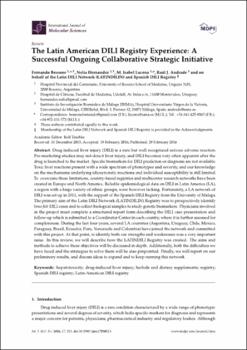| dc.description.abstract | Drug induced liver injury (DILI) is a rare but well recognized serious adverse reaction. Pre-marketing studies may not detect liver injury, and DILI becomes very often apparent after the drug is launched to the market. Specific biomarkers for DILI prediction or diagnosis are not available. Toxic liver reactions present with a wide spectrum of phenotypes and severity, and our knowledge on the mechanisms underlying idiosyncratic reactions and individual susceptibility is still limited. To overcome these limitations, country-based registries and multicenter research networks have been created in Europe and North America. Reliable epidemiological data on DILI in Latin America (LA), a region with a large variety of ethnic groups, were however lacking. Fortunately, a LA network of DILI was set up in 2011, with the support of the Spanish DILI Registry from the University of Malaga. The primary aim of the Latin DILI Network (LATINDILIN) Registry was to prospectively identify bona fide DILI cases and to collect biological samples to study genetic biomarkers. Physicians involved in the project must complete a structured report form describing the DILI case presentation and follow-up which is submitted to a Coordinator Center in each country, where it is further assessed for completeness. During the last four years, several LA countries (Argentina, Uruguay, Chile, Mexico, Paraguay, Brazil, Ecuador, Peru, Venezuela and Colombia) have joined the network and committed with this project. At that point, to identify both our strengths and weaknesses was a very important issue. In this review, we will describe how the LATINDILI Registry was created. The aims and methods to achieve these objectives will be discussed in depth. Additionally, both the difficulties we have faced and the strategies to solve them will be also pinpointed. Finally, we will report on our preliminary results, and discuss ideas to expand and to keep running this network. | en_US |


